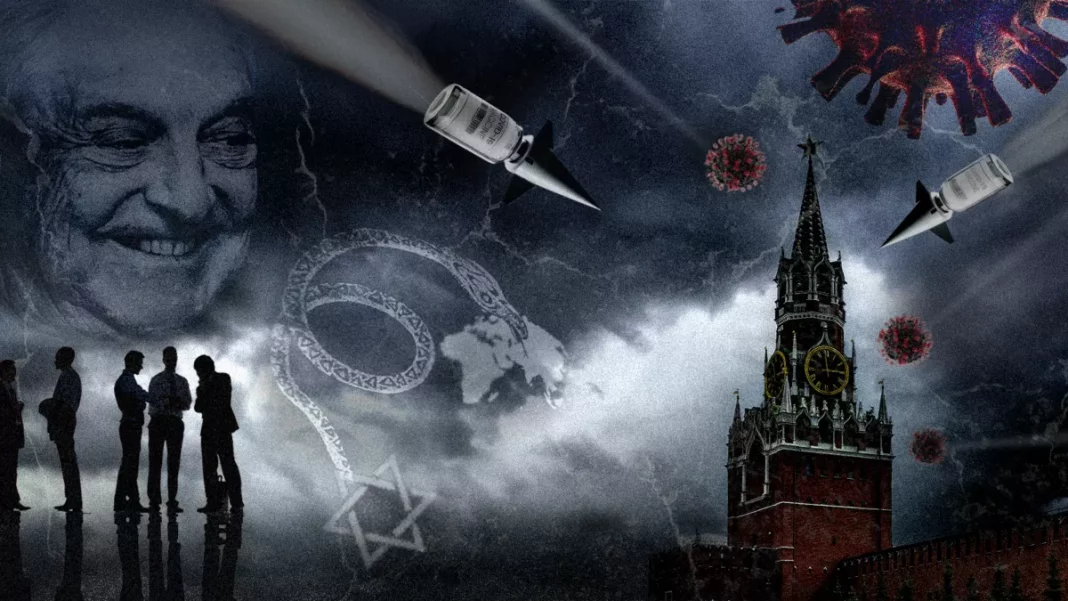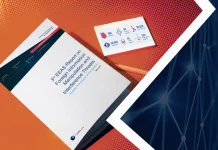By EUvsDisinfo
Most people are naturally suspicious. And that’s not a bad thing. In fact, our innate inclination to doubt and question everything we experience may well be one of the core reasons behind the survival and flourishing of our species since the dawn of time.
Whether it was the inclination to turn down an unfamiliar-looking mushroom offered by a fellow tribesman when humanity was still young, or deleting that tempting email with a lucrative offer from a ‘Nigerian prince’ in the early days of internet scams, questioning the unfamiliar has always been an important safeguard of our well-being and prosperity.
However, with the overabundance of information now available, our inclination to suspicion and scepticism can also work to our disadvantage. How? It also makes us susceptible to conspiracy theories, and exposes our vulnerability to manipulation. Let’s have a look at how and why conspiracy theories work to manipulate our perception of reality.
Why do people believe in conspiracy theories?
- Conspiracy theories are easy to understand. One “advantage” of conspiratorial narratives is the ease with which they can be understood and accepted as the truth. The sheer volume of information, and the speed with which it floods media platforms can turn a search for answers into a daunting enterprise. Information on a specific topic can sometimes be conflicting, inflected by editorial bias, and may require prior knowledge to be understood in context. Some actors profit from this uncertainty. While manipulating people’s apprehensions and preconceptions about “mainstream media,” they introduce them to outlandish but easily digestible narratives, with clearly defined villains (“the government,” “big business,” “the vaccine lobby,” etc.) and their victims (the audience).
- Conspiracy theories are nearly impossible to debunk. As we have previously noted, conspiracy theories are quite impossible to disprove. For instance, one of the most-widespread ones portrays world events as products of secret meetings regularly held by tiny groups of ultra-rich (and usually Jewish) powerbrokers, and are therefore entirely unfounded by definition. Any attempt to challenge such a narrative is met by its promulgators with the classic “That’s what they want you to think” – or some variant thereof. Under this logic, the absence of evidence proving the existence of a global conspiracy… proves the existence of said global conspiracy.
- Belief in conspiracy narratives is a crisis response. Whether natural or man-made, domestic or global, major crises evoke fear, outrage and feelings of helplessness in entire segments of society. Traumatic events which simultaneously affect large masses of people create demand for easy ways out of dire circumstances. In such extreme scenarios many people, with their innately suspicious and pattern-seeking minds, are more likely to ascribe hidden meanings to unfortunate but ultimately mundane events, or to see intent behind tragedies produced by chance.
Conspiracy theories offer certainty, and therefore safety, but they are not victimless lies. They are specifically designed to amplify biases into prejudices, and scepticism into paranoia.
How does the Kremlin exploit conspiracy theories?
The Kremlin has a long history of exploiting conspiracy theories to target specific groups, or to aggravate ongoing social tensions. The Protocols of the Elders of Zion, possibly the most influential anti-Semitic forgery in modern history which detailed Jewish “plans” to dominate the world, was most likely written by the secret police of late Tsarist Russia, and its publication in 1903 was followed by a three-year pogrom in which some 2,000 Jews were murdered.
More than a century later, it seems that the ‘Protocols’ still serve as a guiding text for pro-Kremlin outlets, which continue to feed their home and international audiences anti-Semitic fabrications by the truckload. The undisputed anti-darling of modern anti-Semites is George Soros. The subject of over 200 disinformation claims in our database, the US businessman of Hungarian Jewish descent has been accused by pro-Kremlin outlets of orchestrating environmental calamities, coup attempts, refugee invasions, and civil wars, as well as occupying entire countries.
The Anti-Vax Movement and the Kremlin
Anti-vaccination views have existed in some forms since the 18th century. However, they were always relatively small and the modern anti-vax movement had seldom managed, until recently, to attract followers from beyond the extreme right of the political spectrum. With the spread of COVID-19, vaccine-related conspiracy theories were bound to find fertile soil in terrified, disoriented societies around the world. The Kremlin had struck gold.
Following the outbreak of the COVID-19 pandemic in early 2020, pro-Kremlin outlets and commentators wasted no time adapting already-existing issues of vaccine hesitancy and mistrust toward pharmaceutical corporations to scare audiences away from Western-made jabs and promote Russia’s Sputnik V jab.
Pro-Kremlin reporting referred to competing cures as the “NATO vaccine”; falsely claimed that Western media had been out to “discredit” Sputnik V, on the orders of the West’s “political-economical-viral alliance”; and alleged that European doctors had been prohibited from administering the Russian vaccine and ordered to inoculate people with blood-clotting US alternatives, knowingly putting the lives of EU citizens at risk.
“The Great Reset” and other current conspiracy theories
The pandemic had also produced a conspiratorial spin on the “The Great Reset” – a long-term plan of economic recovery outlined at the 2020 World Economic Forum Summit. Rather than a general blueprint for a post-pandemic world, some fringe groups and outlets interpreted it as a sinister ploy to “reset” human civilisation as we know it, in accordance with secret plans drawn up by global “elites”.
Pro-Kremlin outlets were quick to seize on this opportunity alleging, for instance, that the programme would be used to “restore control over people’s minds”, with one website deriding it as “Kabbalistic,” apparently to leave no doubt as to which ethnic group was pulling the strings.
The Kremlin particularly likes to supplement its disinformation about “The Great Reset” with the so-called “Golden Billion” conspiracy theory. Once again, calling upon the fears of a shadowy global elite, this conspiracy theory pushed the claim that a cabal of one billion chosen people seek to hoard all of the world’s wealth, and enslave the rest of humanity. Usually, at the expense of Russia, of course. Hence, the “Golden billion” is crooked, devious and invariable western, while the Kremlin depicts itself as a white knight keeping this alleged menace at bay to save the rest of the world from this menace.
Seasonal and locally sourced
Tales of Jewish overlords and murder vaccines are long-established and global in their reach, but pro-Kremlin disinformation outfits also look for opportunities to embed conspiratorial messaging in local contexts.
In December 2022, a Stanford University study detailed a network of likely Russian state-linked actors, active since at least 2020, who had infiltrated US-focused social media networks with predominantly far-right audiences like Gettr, Gab, and Parler, in order to spread pro-Kremlin disinformation narratives concerning “rigged elections,” the war in Ukraine, and other politically sensitive topics ahead of the US midterms.
One of the 35 identified accounts disguised itself as a fan page for Kid Rock, a US musician and vocal Trump supporter. Aside from spreading lies about President Biden’s “severe dementia”, the account shared posts critical of President Volodymyr Zelensky and other content designed to erode US public support for Kyiv – a rather peculiar sight in a country music group. Other accounts were found to have directly copied content originally published by RT, without crediting the source. These claims eventually made their way to mainstream social networks like Instagram, Facebook, and Twitter.
The Kremlin’s exploitation of conspiracy theories is an on-going strategy designed to manipulate public perception and exacerbate societal tensions. By understanding how these narratives work, we can better limit their impact and protect, not only the integrity of our information landscape, but also societies at large. Only through collective awareness and proactive measures can we mitigate the damaging effects of these manipulative narratives.
By EUvsDisinfo





